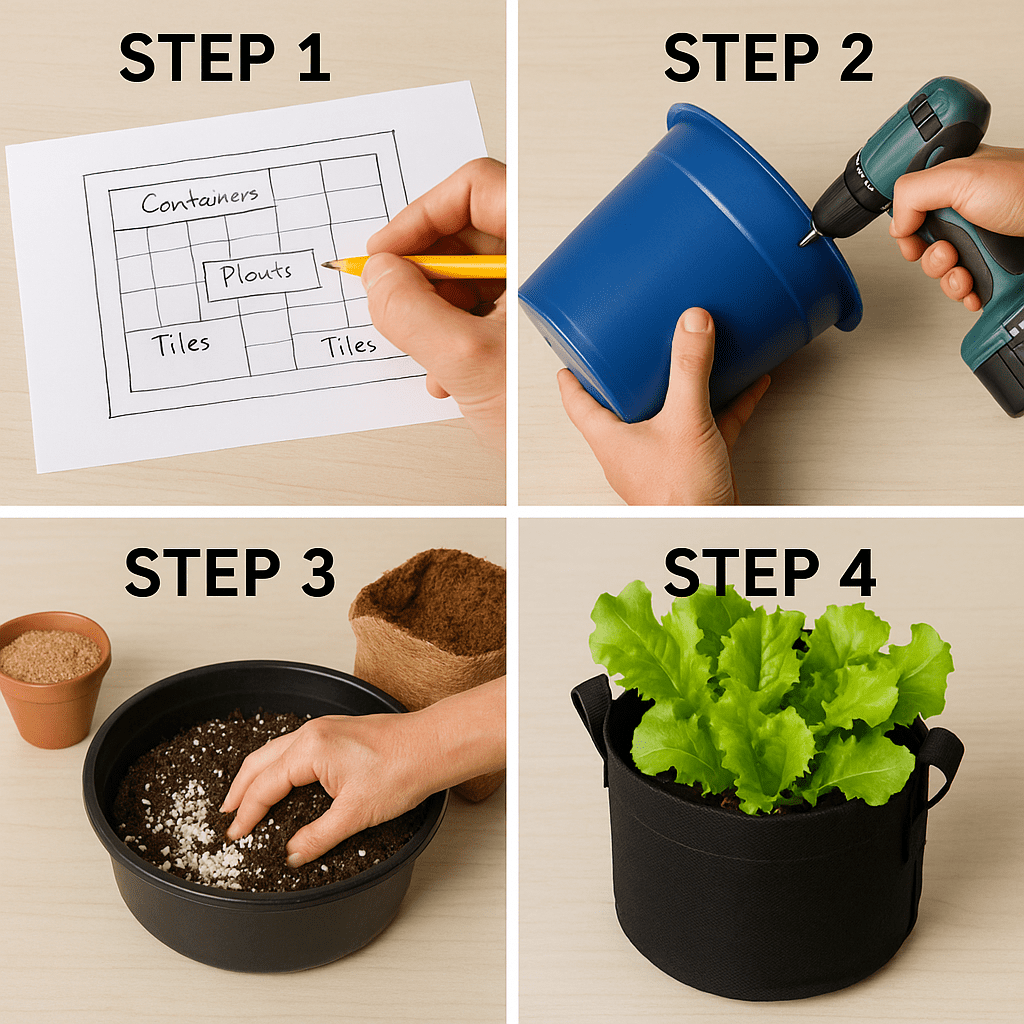Urban gardening is growing fast—and not just in backyards or balconies. One of the most innovative and accessible ways to grow your own food or flowers in a city is by starting a rooftop garden with minimal investment. Whether you’re looking to cultivate herbs, vegetables, or create a green retreat, a rooftop can become a productive and relaxing space with the right strategy.
This article offers a complete, beginner-friendly guide to help you transform your rooftop using affordable materials and practical steps, even if you’re on a tight budget.
Why Choose a Rooftop Garden?
Maximize Unused Space
In cities, space is limited. Rooftop gardens allow you to use often-neglected areas to grow fresh produce or create a natural oasis.
Environmental Benefits
Rooftop greenery reduces the urban heat island effect, improves air quality, and helps manage rainwater runoff.
Budget-Friendly Self-Sufficiency
With the right approach, a rooftop garden can reduce your grocery bills and increase your food independence over time.
What to Consider Before You Start
1. Check Building Safety and Load Capacity
Before bringing any soil or pots upstairs, consult your building management or a structural engineer to ensure your rooftop can handle the weight.
2. Access and Water Supply
Make sure the rooftop is accessible for carrying supplies and has a water source (or that you can set up a hose system or rainwater catchment).
3. Sunlight and Wind Exposure
Observe how much sunlight your rooftop gets daily. Most vegetables need 6–8 hours of sun. Also, rooftops tend to be windy—consider windbreaks like mesh screens or trellises.
Step-by-Step: Start Your Rooftop Garden on a Budget
H2: Step 1 – Plan Your Layout
Sketch a basic plan of your rooftop and identify sunny and shaded zones. Designate areas for containers, walking paths, and storage. Choose vertical structures to save space.
H2: Step 2 – Choose Affordable Containers
You don’t need fancy pots to grow plants. Here are low-cost container options:
- Plastic buckets from hardware stores
- Old crates or wooden boxes (lined with plastic)
- Reused paint cans (with drainage holes)
- Grow bags made from landscape fabric
💡 Pro Tip: Drill holes in the bottom of your containers to allow proper drainage.
H2: Step 3 – Use Lightweight, Inexpensive Soil Mix
Avoid heavy soil from your yard. Instead, mix coconut coir, compost, and perlite or vermiculite for a lightweight and nutrient-rich blend.
H2: Step 4 – Start with Easy-to-Grow Crops
Choose low-maintenance, high-yield plants such as:
- Leafy greens (lettuce, spinach, arugula)
- Tomatoes (dwarf or patio varieties)
- Herbs (basil, mint, parsley)
- Radishes and green onions
These are beginner-friendly and grow quickly in containers.
H2: Step 5 – Water Efficiently
Install a basic drip irrigation system or use recycled bottles with holes to create a slow-release watering method. Group plants with similar watering needs.
H2: Step 6 – DIY Fertilizer from Kitchen Waste
Create your own compost with kitchen scraps like vegetable peels, coffee grounds, and eggshells. Alternatively, use diluted banana peel water for a potassium-rich fertilizer.

Extra Budget Tips
- Ask local bakeries or restaurants for used buckets and crates.
- Reuse milk cartons and soda bottles as planters.
- Join gardening forums or local Facebook groups for free plant cuttings or leftover seeds.
- Shop secondhand stores for tools or trays.
Common Mistakes to Avoid
- Skipping drainage: Roots can rot without proper drainage.
- Overwatering or underwatering: Monitor the soil’s moisture regularly.
- Ignoring pests: Check for signs of aphids or fungus and treat early using neem oil or soap sprays.
No backyard? No problem. Explore our guide on urban gardening for renters to discover space-saving solutions.
Conclusion: Start Growing Without Breaking the Bank
You don’t need a big yard or a big budget to garden. With creativity, planning, and a little resourcefulness, you can start your rooftop garden with minimal investment—and enjoy the satisfaction of growing your own herbs, vegetables, and flowers in the heart of the city.
Save this guide for your next planting weekend, and share it with a friend who’s ready to go green on a budget!
FAQs
Can I really garden on a rooftop without professional help?
Yes! As long as your structure is safe and you follow basic setup tips, rooftop gardening can be a great DIY project.
What are the cheapest containers for rooftop gardens?
Reused buckets, crates, or grow bags are inexpensive and ideal for beginners.
Looking for affordable grow bags, potting soil, or drip irrigation kits? Browse beginner-friendly rooftop gardening supplies on Amazon.
How can I protect plants from rooftop winds?
Use windbreaks like lattice panels, bamboo fencing, or tall plants to block wind without blocking the sun.
